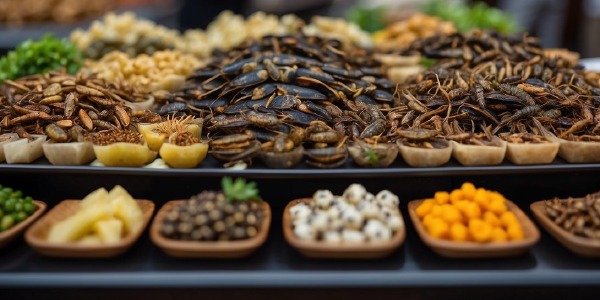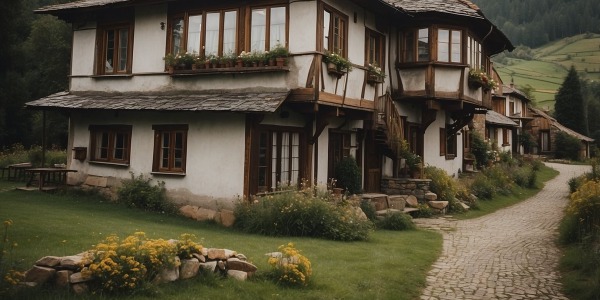12 Most Expensive Foods: Indulge in Luxury
Ever wondered what the priciest foods in the world are? Some dishes come with a hefty price tag, making them a true luxury to taste.

Discovering these expensive foods can be exciting and surprising. These dishes might just be the most extravagant meals you could ever eat.
1. Almas Caviar

Almas Caviar is one of the most luxurious and expensive foods in the world. It comes from the rare albino beluga sturgeon, found in the Caspian Sea. The fish must be at least 100 years old for the best quality caviar.
The eggs are known for their white or golden color. They have a smooth, creamy texture and a rich, nutty flavor. Almas Caviar is often enjoyed on its own, with blinis, or with a touch of crème fraîche.
It comes in a special 24-karat gold tin. This adds to its exclusivity and high price. You can find it in select gourmet shops and high-end restaurants.
If you ever get a chance to try Almas Caviar, you’re in for an unforgettable treat.
2. White Truffle from Alba

The White Truffle from Alba is one of the world’s priciest foods. Found mainly in northern Italy, these rare truffles grow underground near the roots of certain trees. They have a unique, pungent aroma that truffle lovers adore.
Truffle hunters rely on trained dogs to sniff out these precious fungi. The white truffle season typically runs from late September to December. During this time, you can find them in gourmet markets and high-end restaurants.
White truffles are often used to enhance pasta, risotto, and egg dishes. Shaved thinly, they add a rich, earthy flavor that can’t be matched. Because of their scarcity, even a small amount of white truffle can cost hundreds of dollars.
If you ever get the chance to taste a dish with white truffle from Alba, consider yourself lucky. This rare treat is cherished by chefs and foodies around the globe.
3. Yubari King Melon

Yubari King Melons come from Japan. They are famous for their perfect sweetness and smooth, round shape. Grown only in Yubari, Hokkaido, these melons are a true luxury.
The melons are carefully cultivated in greenhouses with precise conditions. Farmers tend to them with attention to detail, ensuring each melon reaches peak quality. This care makes them one of the most expensive fruits in the world.
People often give Yubari King Melons as gifts, especially during special occasions. The melons are typically auctioned off, and prices can reach thousands of dollars for a pair.
You might wonder why these melons are so costly. It’s partly because of their taste and partly due to their limited availability. Only a select few are deemed perfect enough to be sold as Yubari Kings.
If you ever get the chance to taste one, you’ll find the flavor to be incredibly rich and juicy. It’s a unique experience that reflects the craftsmanship of Japanese farming.
4. Densuke Watermelon

Densuke Watermelons are one of the priciest fruits in the world. They come from Japan and are grown only on Hokkaido Island. Their unique black rind makes them stand out.
These special watermelons can cost thousands of dollars. A single Densuke Watermelon once sold for $6,100 at an auction. This price makes them a luxury treat.
The taste is sweet and crisp. Many people say it’s one of the best watermelons they have ever tasted. The texture is also very smooth.
Only about 100 Densuke Watermelons are grown each year. This limited supply adds to their high cost. If you’re lucky enough to try one, you’ll get to taste a rare and delicious fruit.
5. Kopi Luwak Coffee

Kopi Luwak, also known as civet coffee, is one of the priciest coffees in the world. It comes from Indonesia and is made using a unique process.
The beans are eaten by a civet, a small mammal, and pass through its digestive system. The beans are collected from the feces, cleaned, and roasted.
This unusual method is thought to improve the flavor of the coffee. It’s often described as smooth, rich, and less bitter than regular coffee.
Due to the labor-intensive process and limited supply, Kopi Luwak can cost up to $600 per pound. It’s not just the process but also the rarity that adds to the high price.
If you’re a coffee lover looking for something special, Kopi Luwak could be a unique experience. Just be prepared for the high cost and the unconventional production method.
6. Bluefin Tuna

Bluefin Tuna is one of the most expensive fish in the world. It’s often used in high-end sushi restaurants. Its rich flavor and delicate texture make it a favorite among seafood lovers.
The demand for Bluefin Tuna is very high, especially in Japan. This has led to some record-breaking prices at auctions. In some cases, a single Bluefin Tuna can sell for hundreds of thousands of dollars.
Bluefin Tuna can be found in the Atlantic and Pacific Oceans. They are known for their large size and speed. They can grow up to 10 feet long and weigh over 1,000 pounds.
Because of their high value, Bluefin Tuna are often overfished. This has led to a decline in their population. Conservation efforts are in place to help protect this species from extinction.
When you eat Bluefin Tuna, you are tasting one of the ocean’s finest delicacies. Even a small piece of this fish can cost a lot, but many people believe the taste is worth it.
7. Wagyu Beef

Wagyu beef is famous for its rich flavor and buttery texture. This beef comes from specific breeds of Japanese cattle.
You’ll notice the intense marbling in Wagyu beef. The fat is dispersed throughout the meat, giving it a melt-in-your-mouth quality.
Wagyu beef’s quality depends on how the cattle are raised and fed. They often live in stress-free environments and eat a special diet.
When you buy Wagyu beef, you might find it labeled as Kobe, Matsusaka, or Ohmi. These are different types of Wagyu, each from a distinct region in Japan.
Wagyu beef is costly because of the care and time it takes to produce. A single steak can cost hundreds of dollars.
Whether you try it at a high-end restaurant or buy it to cook at home, Wagyu beef offers a unique and luxurious dining experience.
8. Matsutake Mushrooms

Matsutake mushrooms are a rare and prized delicacy. They are known for their hearty, spicy aroma and distinct flavor that combines elements of cinnamon and pine.
You can find these mushrooms in Japan, China, Korea, and parts of North America. They grow in the wild, often near the roots of certain trees like pine.
Harvesting Matsutake mushrooms is a big challenge. They grow deep in forest soil and are hard to find. This scarcity makes them quite expensive.
These mushrooms can’t be cultivated commercially. Their price can soar up to $1,000 per pound, depending on their quality and rarity. Matsutake mushrooms are often used in traditional Japanese dishes.
People enjoy them grilled, steamed, or in soups and rice dishes. They are celebrated for their unique taste and aroma, making them a gourmet delight.
If you ever get a chance to try Matsutake mushrooms, don’t miss it. Their flavor is a unique experience that food enthusiasts cherish.
9. Saffron

Saffron is known as the world’s most expensive spice. It comes from the stigma of the Crocus sativus flower. Each flower has only three stigmas, which are hand-picked.
Harvesting saffron is labor-intensive. It takes around 75,000 flowers to produce just one pound of saffron. This is one reason for its high price.
You use saffron mostly in cooking. It adds a unique flavor and vibrant yellow color to dishes. Many famous dishes from around the world use saffron, such as paella and risotto.
Saffron is not only valuable in the kitchen. It has been used in traditional medicine for centuries. People believe it has benefits for mood and health.
When buying saffron, be cautious. Some sellers mix it with other ingredients to reduce costs. Always check for pure, high-quality saffron to get the best flavor and benefits.
10. Bird’s Nest Soup

Bird’s Nest Soup is famous for being one of the priciest dishes in the world. The main ingredient, edible bird’s nests, is made by swiftlets using their saliva. This special ingredient is believed to have health benefits and is thought to help with digestion and boost the immune system.
These bird’s nests are found in caves and on cliff faces, making them difficult and dangerous to collect. Because of this, the nests are very rare and expensive. A bowl of Bird’s Nest Soup can cost hundreds of dollars, depending on the quality and preparation.
The soup itself is often served at fancy restaurants, especially in China and other parts of Asia. It has a unique, gelatinous texture and a mild, slightly sweet flavor. Many people add rock sugar to the soup to enhance the taste. For those who can afford it, Bird’s Nest Soup is considered a luxurious treat.
11. Moose Cheese

Moose cheese is one of the rarest cheeses in the world. It comes from the milk of three moose in Sweden. The cheese is only made at the Moose House farm. This makes it very special.
Each moose only produces milk for a few months each year. This limited supply means the cheese is hard to find. It is also why it is so expensive.
The flavor of moose cheese is strong and creamy. It can be white or slightly yellow. The cheese is often available in three types: basic white, creamy blue, and a dried variety.
You can’t just walk into a store and buy moose cheese. It is usually sold in high-end restaurants or gourmet shops. You might need to reserve it ahead of time.
The price of moose cheese can be as high as $500 per pound. This high cost is because of the labor and care needed to produce it. If you ever get a chance to try moose cheese, it’s worth it for the unique experience.
12. Spanish Iberico Ham

Spanish Iberico Ham is one of the most expensive types of ham in the world. It comes from Iberico pigs, which are native to Spain. These pigs are special because they feed on acorns, giving the ham a unique, rich taste.
The curing process for Iberico Ham is very long and can take up to three years. This slow curing helps develop its deep flavor and melt-in-your-mouth texture. Each slice is a true delicacy.
You might find it in fancy restaurants or gourmet shops. Its high price comes from the careful and time-consuming process of raising the pigs and curing the ham. Treat yourself to a slice and experience a piece of Spanish culinary art.
Origins and History of Luxurious Foods

Luxurious foods come from rich cultural backgrounds and significant historical moments. Explore how these foods gained their status and their importance in different cultures.
Cultural Significance
Luxurious foods are often tied to special traditions. For example, in Japan, wagyu beef is a symbol of culinary excellence. It’s celebrated in festivals and special occasions. In Italy, white truffles are considered a national treasure. They are featured in elegant dishes during the truffle season, reflecting their deep connection to Italian heritage and cuisine.
Caviar has a long history in Russian culture. It was once reserved for the nobility and remains a symbol of luxury. In China, Shark fin soup is a traditional dish served at weddings and banquets, despite controversies. These foods become symbols of cultural pride and are often paired with celebrations and communal gatherings.
Historical Context
Many luxurious foods have fascinating histories. Foie gras dates back to ancient Egypt, where it was discovered that geese could be fattened to produce a rich liver. The tradition continued through the Roman Empire and into modern French cuisine. Saffron, which is more valuable than gold by weight, has been used since ancient times in Persia and India for its color and flavor.
Bluefin tuna became prized in Japan during the mid-20th century, especially for sushi. Its value soared, making it a status symbol. Wine and champagne have also long histories, once being exclusive to royalty and the elite. The methods of production and preservation have roots in ancient Greece and Rome, evolving over centuries to become what they are today.
Uniqueness and Rarity

Some foods are incredibly expensive because they are either very unique or extremely rare. This uniqueness often comes from special ingredients or unusual preparation methods. Rarity can be due to limited geographical locations where the food is found or the difficulty in harvesting or producing it.
Factors Influencing Rarity
Certain foods are rare because of how difficult or time-consuming they are to produce. For example, saffron comes from the crocus flower and requires about 75,000 flowers to make just one pound. This painstaking process makes it one of the most expensive spices in the world.
Another factor is the seasonality of the food. White truffles grow only in certain months, making them scarce and highly sought after during that time. Kopi Luwak coffee is rare because it involves a unique process where coffee beans are eaten and passed by a civet cat, then collected and cleaned.
Certain dishes are rare because chefs use ancient or secret techniques to prepare them. These methods can be labor-intensive and involve special knowledge passed down through generations.
Geographical Limitations
Many rare and expensive foods come from very specific places in the world. For example, Matsutake mushrooms are known for their rarity and are mostly found in Japan. The forests where they grow are limited, making the mushrooms difficult to source.
Spanish Iberico ham comes from pigs that are fed on a diet of acorns and herbs found only in certain regions of Spain. This specific diet and the regional restrictions make the ham unique.
Beluga caviar is harvested from the beluga sturgeon, a fish found in the Caspian Sea. The decreasing population of these fish due to overfishing makes this caviar one of the rarest and most expensive.
Furthermore, some foods can only be grown in specific climate conditions. For instance, Bluefin tuna, which is used in high-end sushi, mostly comes from the waters around Japan and the Mediterranean, where the water conditions are just right for this fish to thrive.
The Role of Exclusivity in Pricing
Exclusivity significantly impacts the pricing of luxury foods by creating high demand and limited access. These factors together drive up costs for interested buyers.
Market Demand
Strong market demand boosts prices of exclusive foods. When many people want a rare item, sellers can charge more.
For example, truffles are highly sought after. Due to their unique flavor and limited growth areas, they fetch high prices. Bluefin tuna is another example. It is prized in sushi, and when demand is high, prices soar. Sellers know people will pay premiums for these rare foods.
Luxury foods often become status symbols. The exclusivity and high price make them more desirable. This desire drives up their market value even more.
Seasonal Availability
Seasonal availability affects the price of many luxury foods. When foods are only available at certain times of the year, their prices go up.
For instance, Satsuma oranges are only harvested in winter. Because they can’t be grown all year, the price is highest when they are in season. Matsutake mushrooms also have a short growing season. Their prices spike during their brief availability.
Seasonal foods are fresher and more flavorful when in season, making them even more desirable. Buyers often pay more for foods that are fresh and rare, which drives up their prices further.
Frequently Asked Questions
In this section, you will find answers to common questions about some of the most expensive foods in the world and their unique characteristics.
What are some dishes that rank among the priciest in the world?
Dishes like Almas Caviar, White Truffle from Alba, Yubari King Melon, Densuke Watermelon, and Kopi Luwak Coffee are among the costliest. These foods are famous for their exceptional quality and rarity.
Can you name a few of the top-tier foods known for their hefty price tag globally?
Some of the most expensive foods include Almas Caviar, known for its golden color and sourced from the rare albino sturgeon, and White Truffle from Alba, which has a unique and intense aroma.
What is considered the single most pricey food item on the planet?
Almas Caviar is often regarded as the most expensive food item on Earth. This rare caviar comes from the albino beluga sturgeon and can cost up to $25,000 per kilogram.
Are there any well-known expensive foods that are exclusive to certain countries?
Yes, White Truffle from Alba is a famous example exclusive to Italy. It grows in the Piedmont region and is celebrated for its extraordinary fragrance and taste.
Could you list a few luxury dishes that are often featured in high-end restaurants?
High-end restaurants often feature Almas Caviar, White Truffle from Alba, and Kopi Luwak Coffee. These ingredients are prized for their superior taste and rare availability, making them a staple in upscale dining.
How do rarities and exotic foods contribute to the cost of some of the world’s priciest dishes?
Rarities and exotic foods like Densuke Watermelon and Yubari King Melon are limited in supply and often have unique growth conditions. This scarcity, combined with their exceptional taste, drives up their prices significantly.



